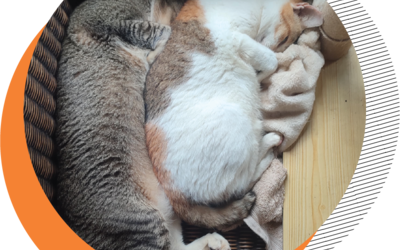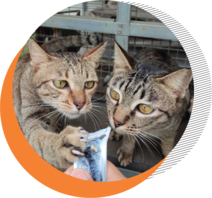
The Importance of Sterilization in Cats
By: Rahmadiva Pradesti – Universitas Negeri Jakarta
Translator: Viviana Anyaputri Tanurahardja – Universitas Udayana
Cats are animals with a seasonal polyestrous cycle, which means they experience periods of heat in certain seasons. During the heat period, if the female and male unite, the possibility of pregnancy is quite high. Cats are included in the category of multiparous animals, which can conceive and give birth to several litters in one gestation period.
In one period, a cat can give birth to 1-6 kittens. The cat’s lactating period lasts about 2 months, after which the female can experience heat again. Without efforts to control the population of cats, both female and male, the number of cat populations can increase significantly. In one year, the cat population can increase up to 18 times if no control measures are taken
Concern about the high population density of feral domestic cats is a global issue related to cat welfare and risks to public health, such as the transmission of diseases between animals and humans (zoonosis). As the cat population increases, the greater the opportunity for humans to interact or be exposed to feral cats which can be a source of transmission of zoonotic diseases.
The impacts of overpopulation also include competition for food resources, resulting in a decline in animal welfare. An approach such as trap-neuter-release (TNR) is one of the methods used to overcome this challenge.

TNR, which stands for Tangkap Steril Lepas or Trap Neuter Release, is an initiative aimed at controlling the population of stray cats or feral cats. The main focus of TNR activities is to stop the excessive reproduction of cats abandoned in the street environment. Stray cats, especially those that are routinely fed by individuals or groups, will be captured to undergo a castration or sterilization process. Once the process is completed and the cats have recovered, they are then released back into their street habitat or a safer location.
Sterilization of animals currently carried out can be differentiated medically, with the surgical removal of the reproductive organs of male animals (castration) or female animals (ovariohysterectomy). In the process of sterilizing cats, both male and female, there are two main stages known as spay and neuter. Spaying is a surgical procedure that involves the removal of female cats’ reproductive organs which play a key role in egg production, fetal development, and the regulation of
female hormones such as estrogen and progesterone. On the other hand, neutering is a surgical procedure that includes the removal of the testicles in male cats, the reproductive organs responsible for sperm production, sperm development, and the production of the main male hormone, namely testosterone.

Benefits of sterilization::
1. Reduces the number of animal populations and the risk of zoonotic disease (rabies) transmission
2. Avoids unwanted births.
3. For female animals, it reduces the risk of uterine cancer and ovarian cancer, especially when cats enter older age.
4. Reduces aggression and risk of biting
5. Cats can live longer and be healthier because cats don’t like leaving the house.
Conditions for animals to be sterilized:
1. The minimum age for male cats is 6-8 months, and female cats 5-6 months
2. The minimum age for dogs is 4-6 months, in America starting from 6 weeks.
3. Animals are in healthy condition and preferably fully vaccinated
4. Not pregnant for females.
5. Signing the operation approval letter
Source:
Azura, D., Nabila, M., & Damanik, A. S. H. (2023). Analisis Dampak Perilaku Sterilisasi
Terhadap Kesehatan Kucing Betina dan Jantan. Jurnal Biologi, 1(1), 1-10.
CATRESCUE.ID, 2024
Dinas Perikanan Dan Peternakan Kabupaten Bogor, 2024
Hanif, A., Dharmawan, T., & Pangestu, A. S. (2017). Catstrate: Solusi Menekan Ledakan
Populasi Kucing Lokal. Animal Walfare and Sustainable Community.
Hanif, A., Dharmawan, T., & Pangestu, A. S. (2017). Catstrate: Solusi Menekan Ledakan
Populasi Kucing Lokal. Animal Walfare and Sustainable Community.
Pratama, A. P. (2017). Perancangan Identitas Rumah Kucing Bandung Untuk Meningkatkan
Kesadaran Masyarakat Kota Bandung. Jurnal Sketsa, 4(2).
Prayoga, S. F., Megawati, N. I., Arifin, E. M. Z., & Nangoi, L. (2021). Ovariohysterectomy
pada kucing liar. Ovozoa: Journal of Animal Reproduction, 10(3), 98-104.
Rahmiati, D. U., Wismandanu, O., & Anggaeni, T. T. K. (2020). Kontrol populasi dengan
kegiatan sterilisasi kucing liar di lingkungan Unpad. Dharmakarya: Jurnal Aplikasi
Ipteks Untuk Masyarakat, 9(2), 114-116
Related Post:





